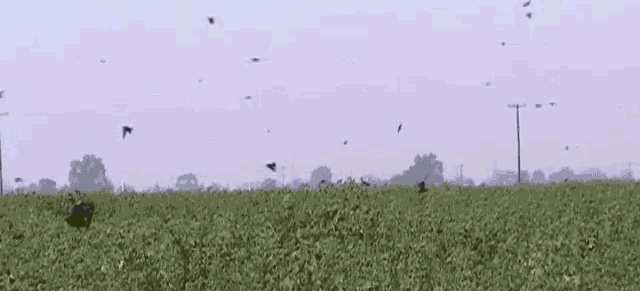Latest News and Updates from Audubon in California
California Condor. Photo: Scott Frier/USFWS
Crows in D from Conner Griffith on Vimeo.
Here's the thinking behind this, according to its maker, Connor Griffith: Crow flight patterns are echoed at a thirtieth of a second to create a loopable waveform that corresponds to a tone. The waveform was measured at 27 crows across one tenth of a second. The animation plays at 12fps (2.25 seconds per 27 birds) and is 22.5 times slower than the rate of the comparable frequency. The median crow waveform was “tuned” to D4 and from there, the other crow waveforms were measured. Different wave shapes (sine, saw) were loosely based on flight pattern shape, which was a result of the speed of the crow and the angle and proximity of the crow to the camera. Got that?
Insect and disease infestation are hitting Southern California trees hard, says the Los Angeles Times. So hard, that it could totally remake the the natural landscape of the area.
Our own Samantha Arthur caught video of this large colony of about 3,000 Tricolored Blackbirds in Sacramento County over the past weekend. These birds are in a patch of blackberry off I-50, and the birds fly over the highway to forage in the foothill grasslands. Right now the birds are nest building and breeding. The males are singing and the colony is very active. Soon they will quiet down and incubate eggs.
Our staff is out in the field with a variety of partners looking to protect Tricolored Blackbird colonies.

We're getting reports from our field team that at least five Tricolored Blackbird nesting colonies have been found on dairy farms so far this spring. We're working closely with the State Department of Fish and Wildife, the Natural Resources Conservation Service, and the Western Dairymen Assocation to contact the farmers and protect the nests. As we've discussed in the past, these colonies are in extreme danger when they nest on a dairy farm, because the farmers often need to harvest the field before the birds have fledged. Last year, we were able to protect every Tricolored Blackbird colony found on dairy farms, and that's our goal again this year.
Our newsletter is fun way to get our latest stories and important conservation updates from across the state.
Help secure the future for birds at risk from climate change, habitat loss and other threats. Your support will power our science, education, advocacy and on-the-ground conservation efforts.
California is a global biodiversity hotspots, with one of the greatest concentrations of living species on Earth.